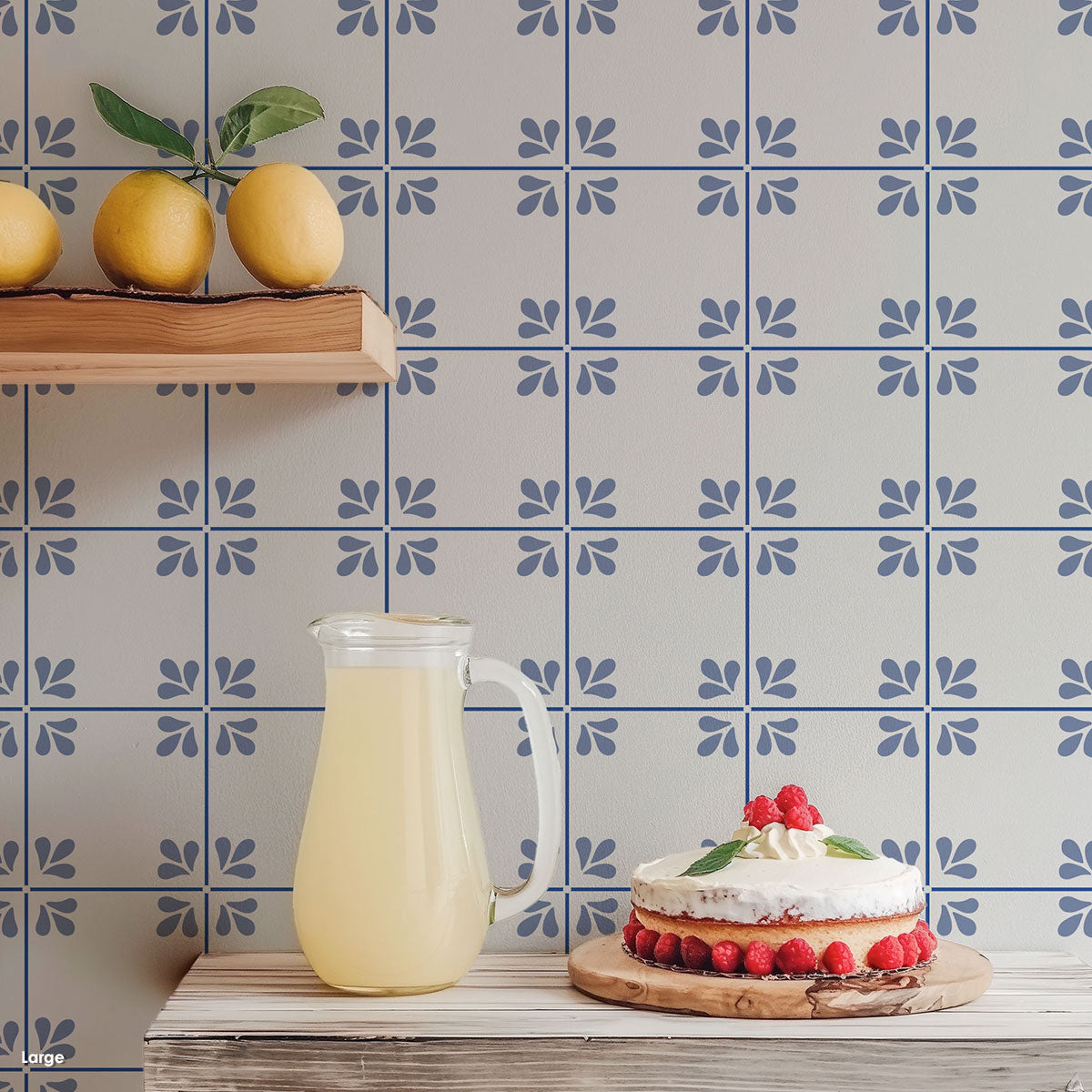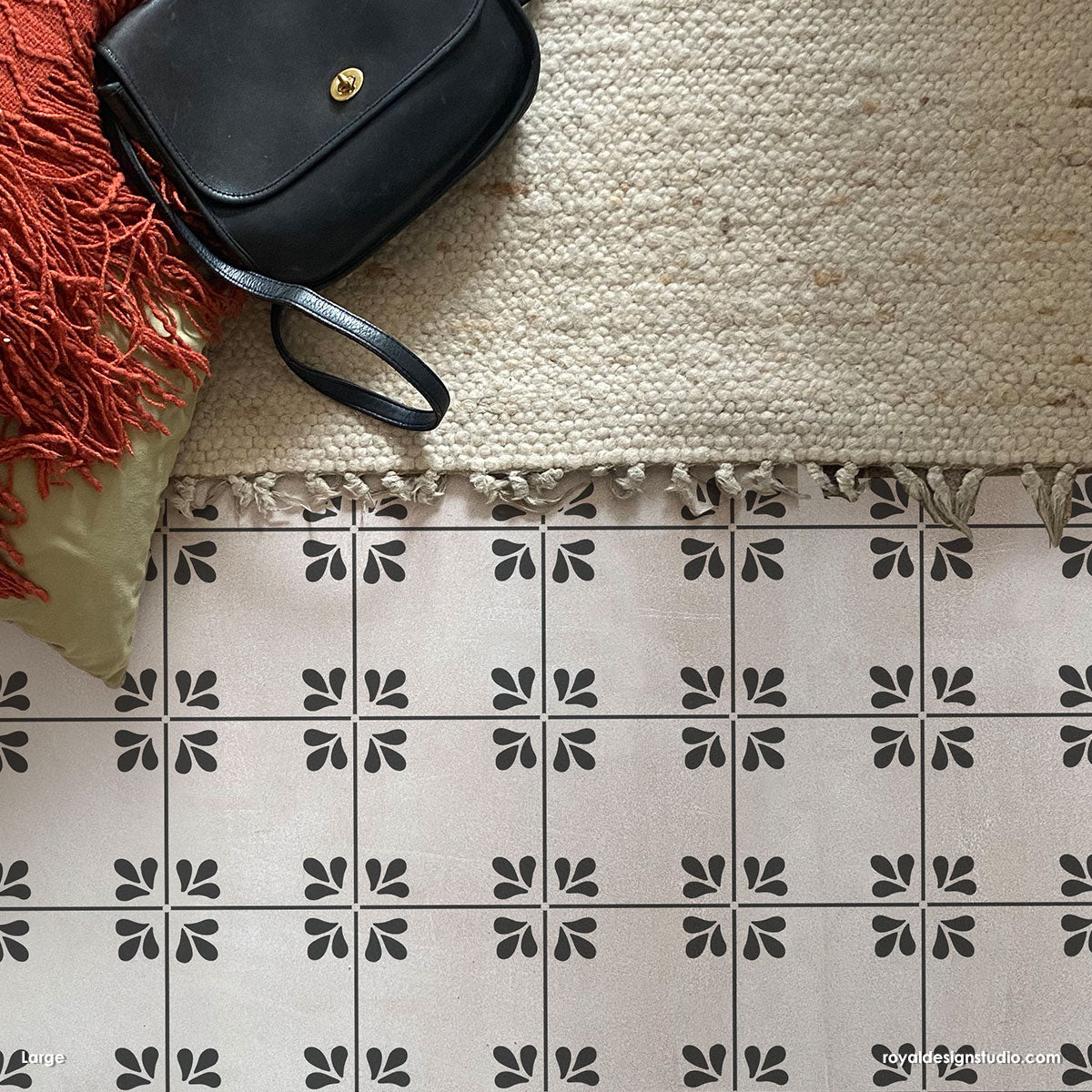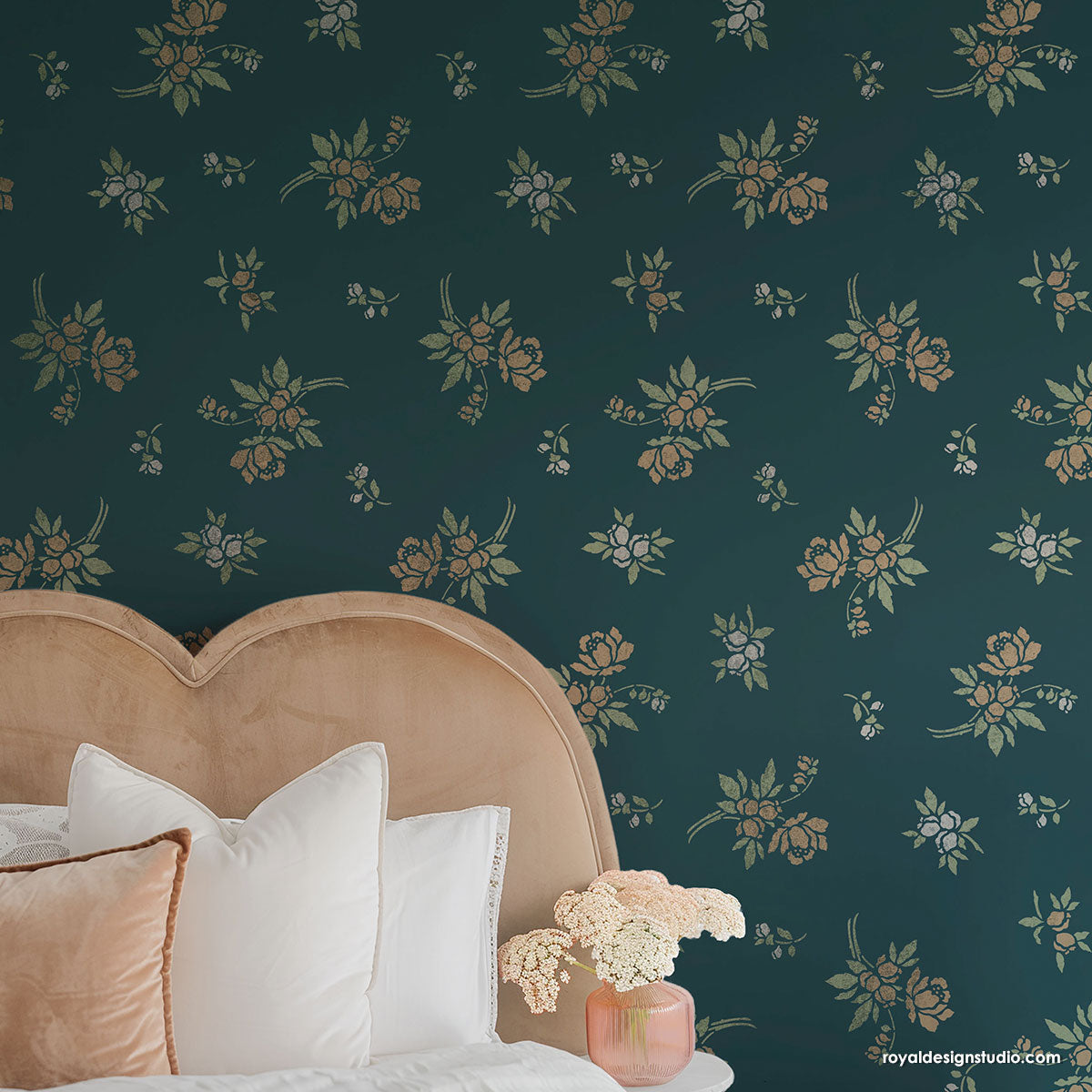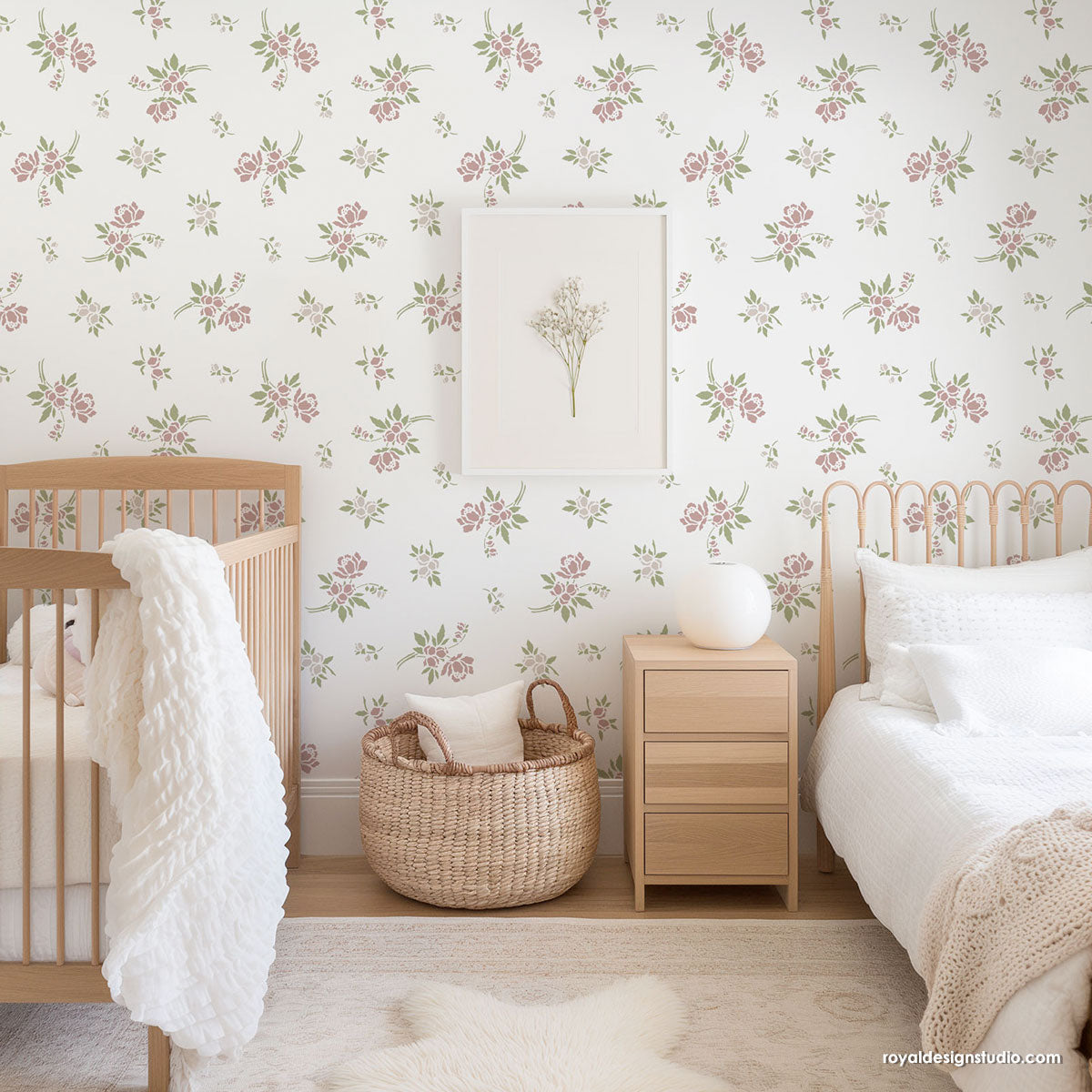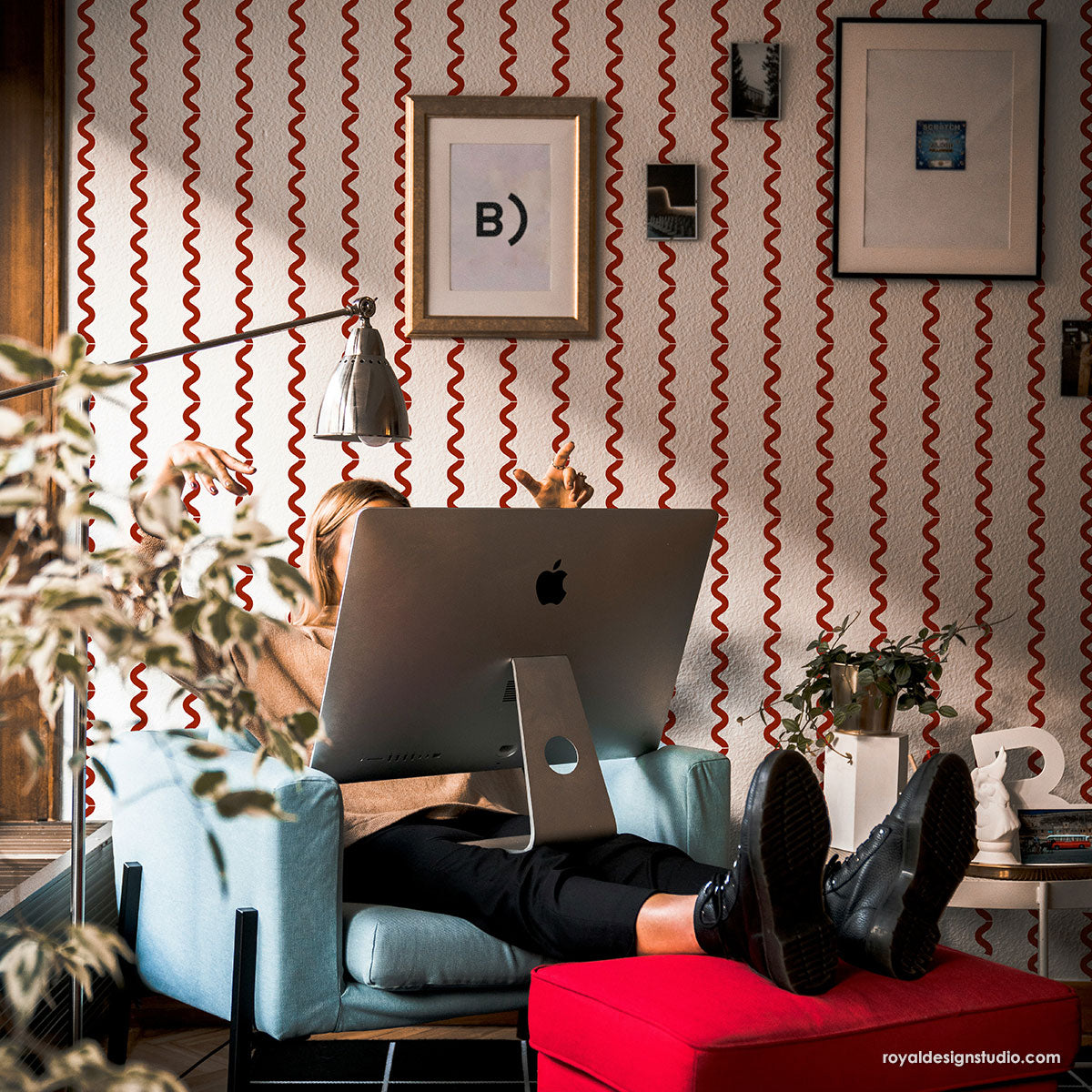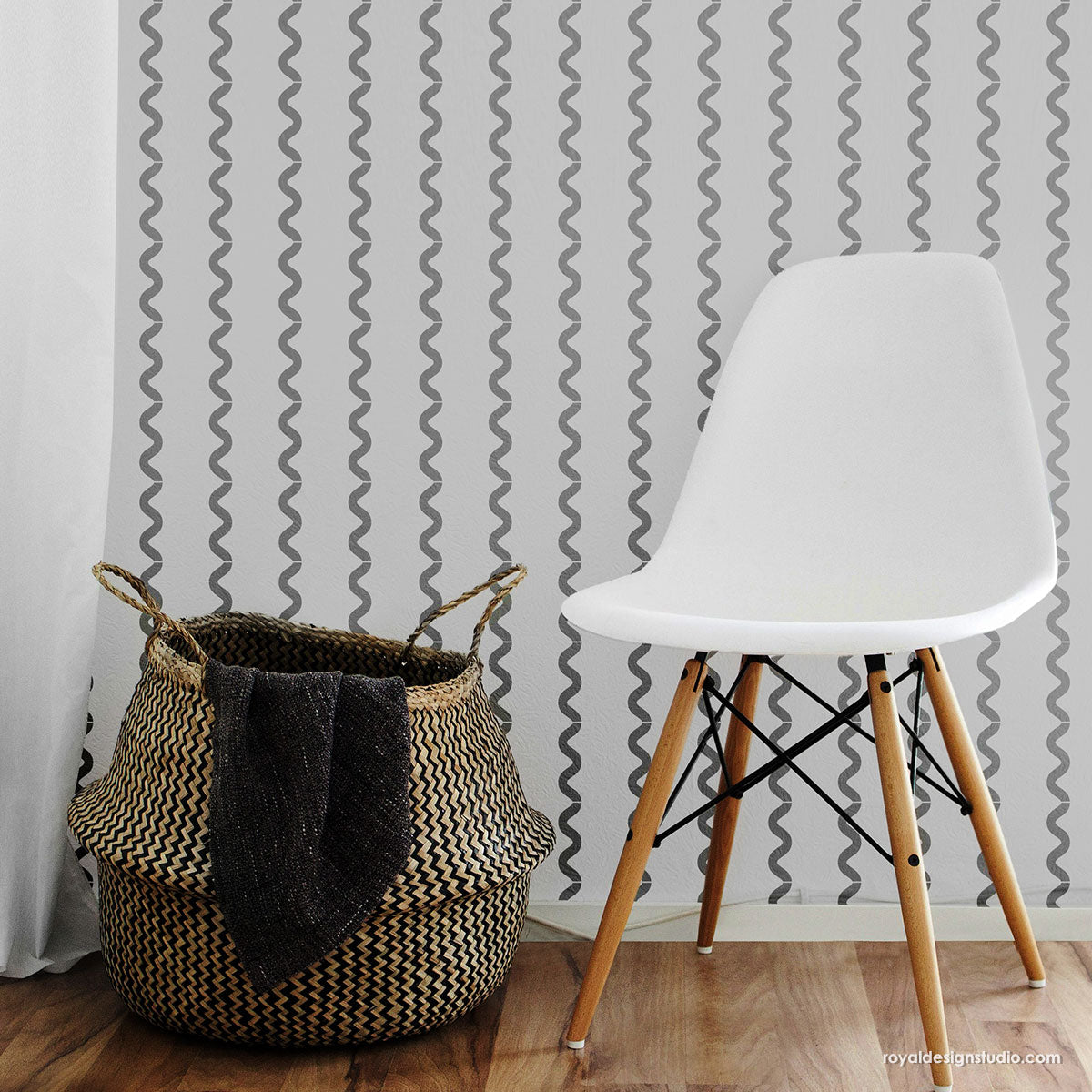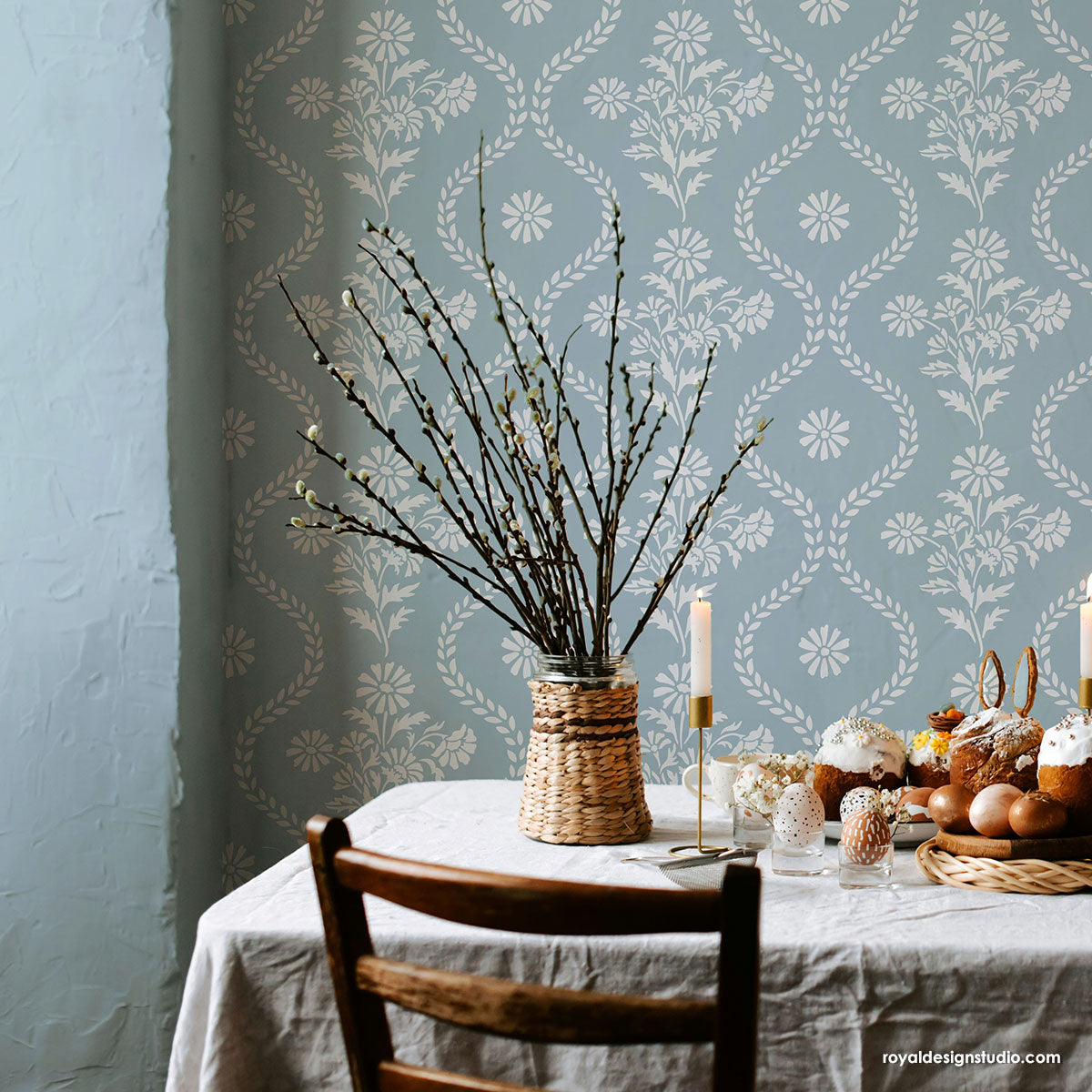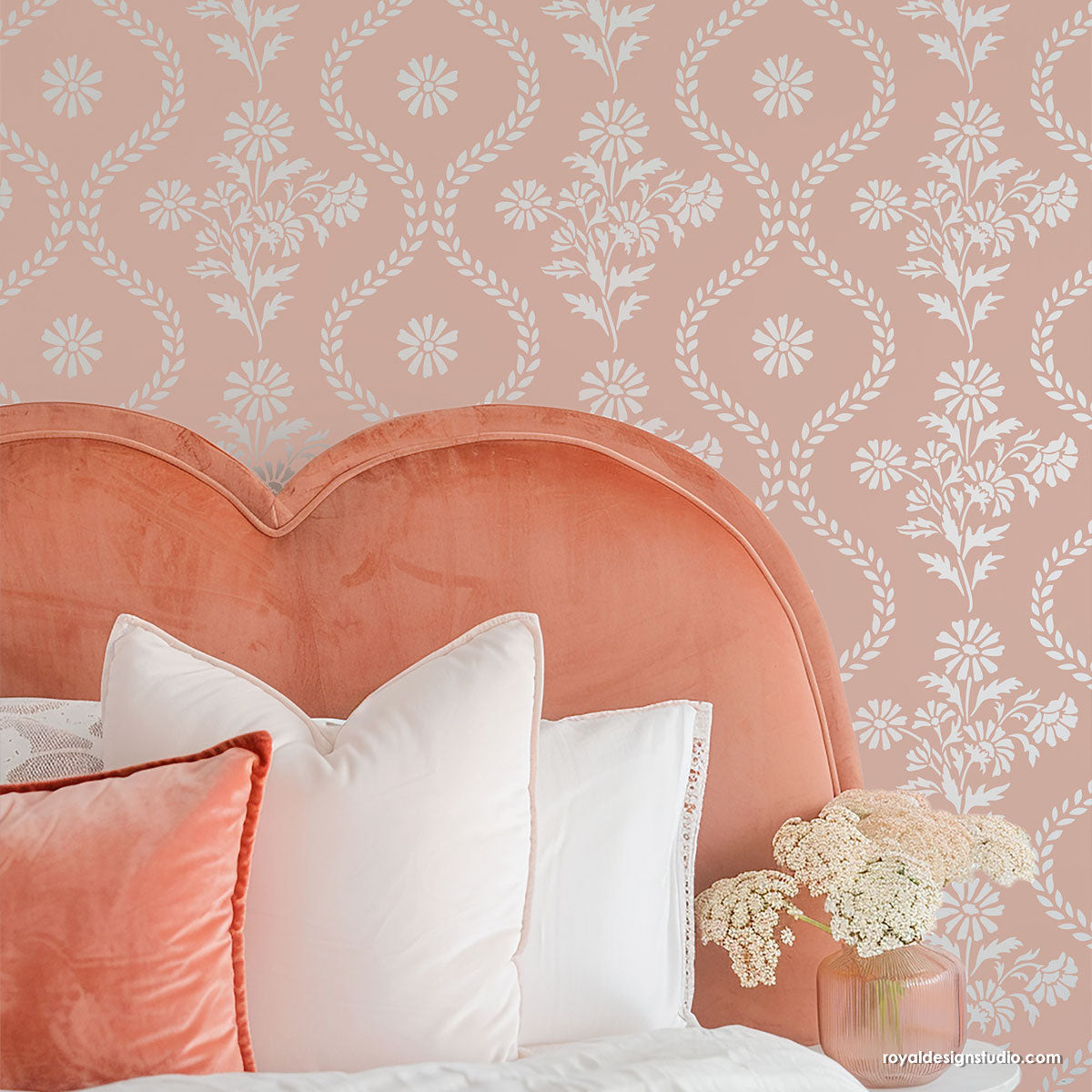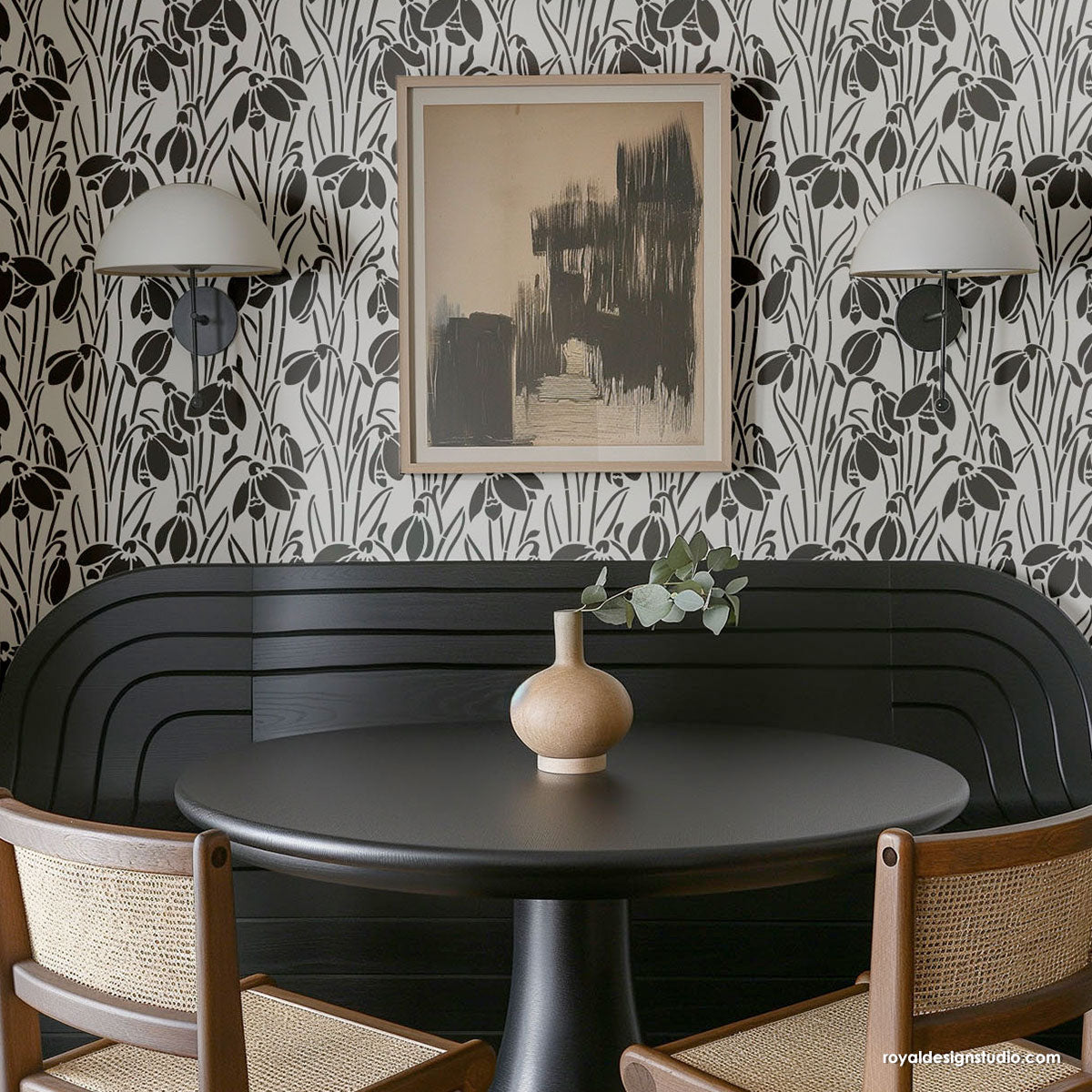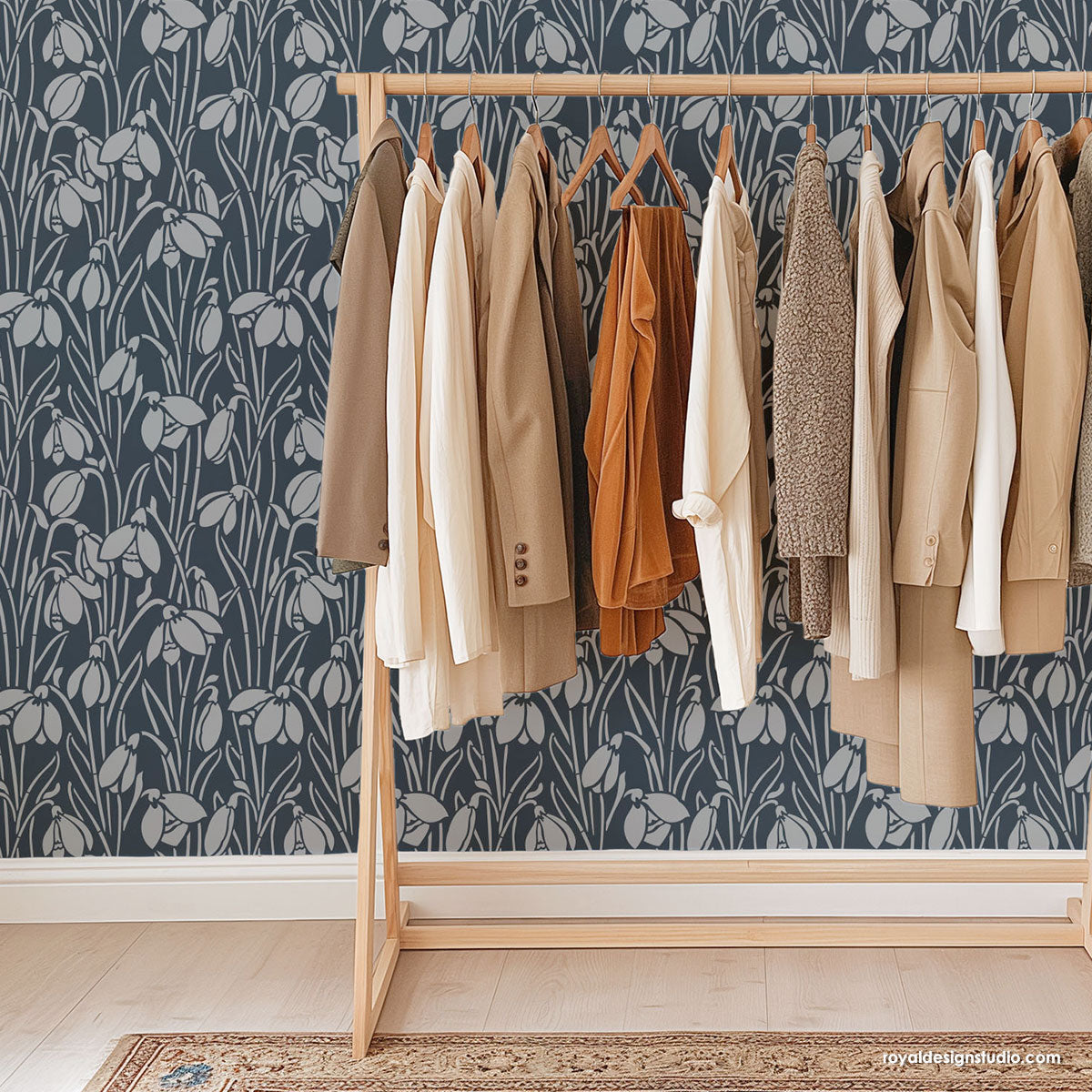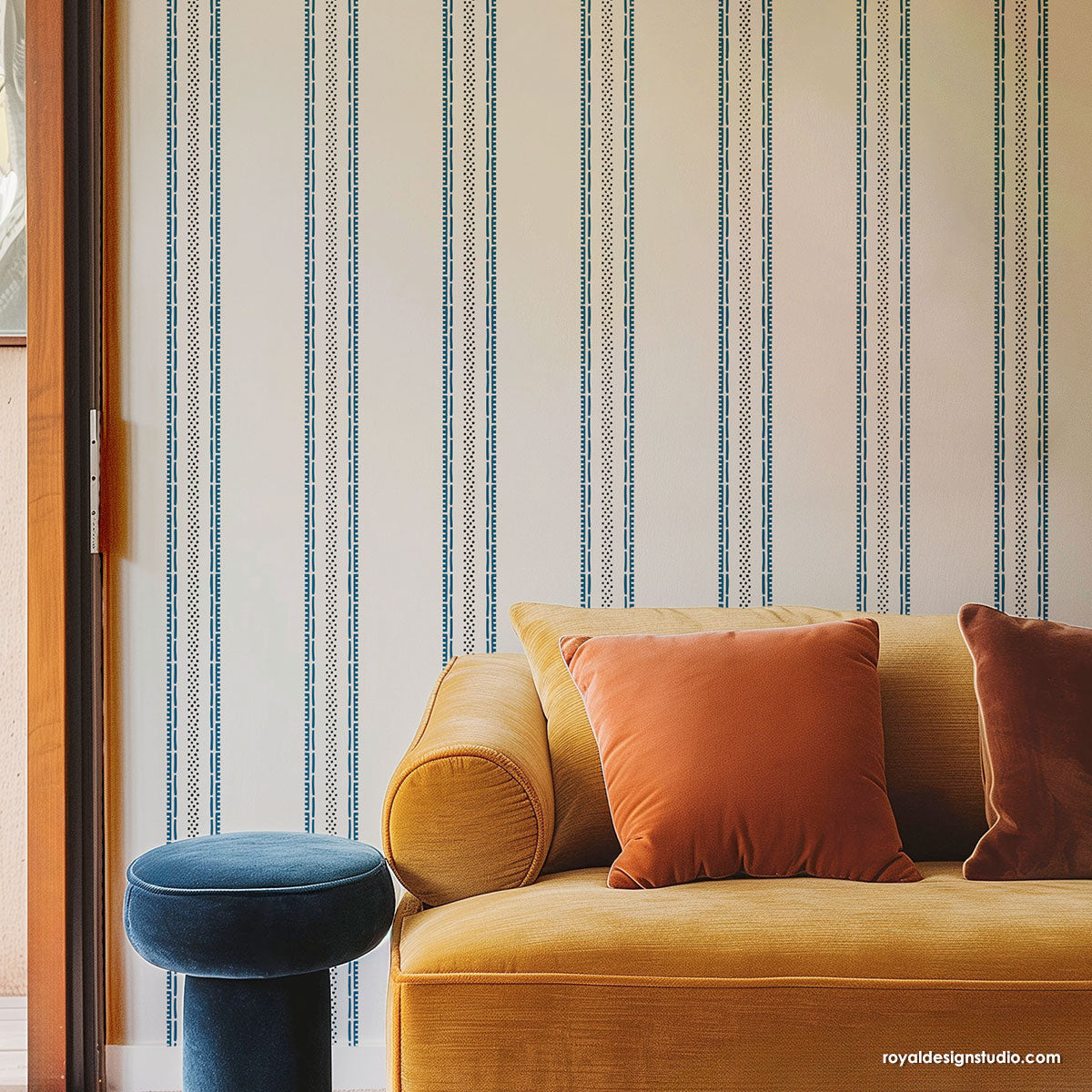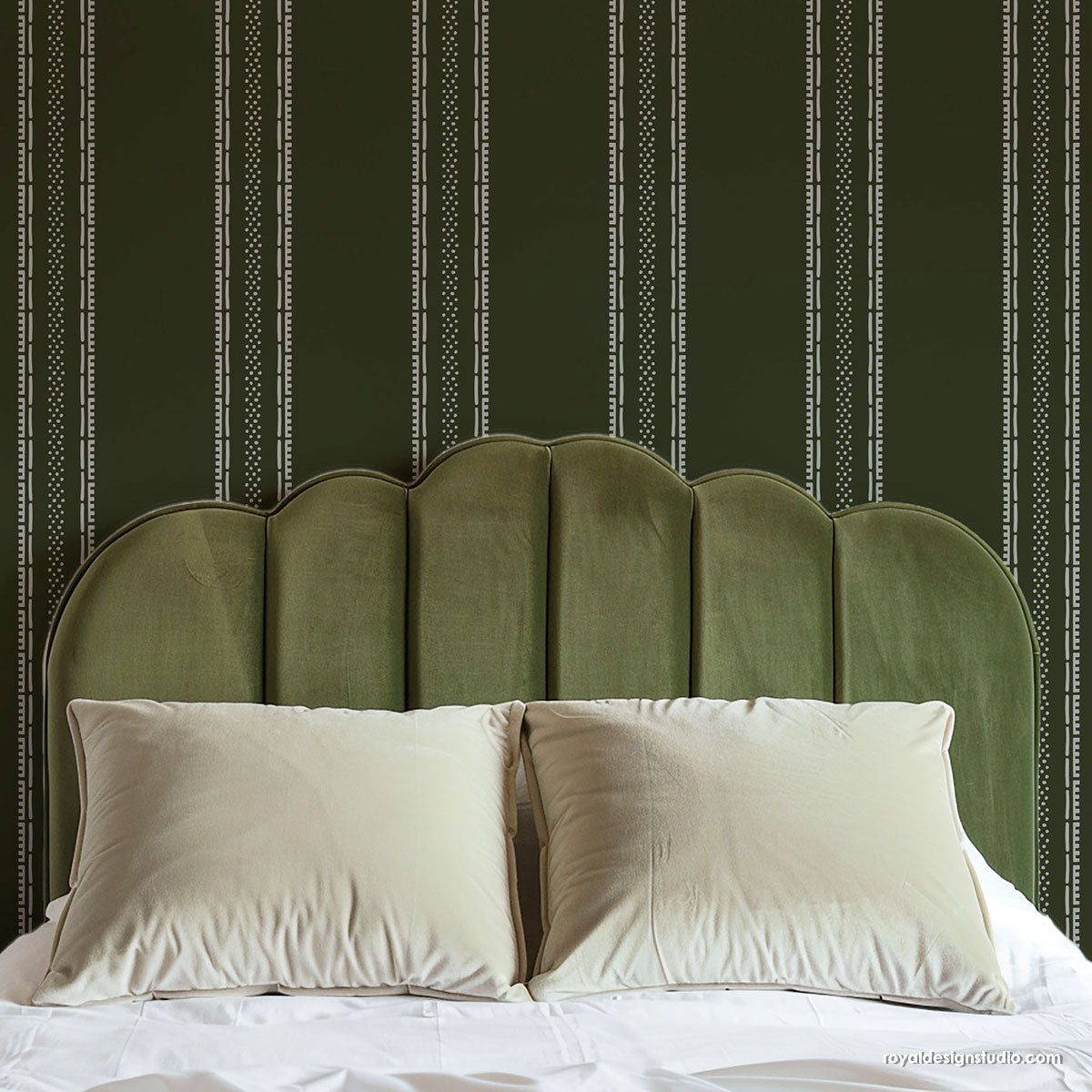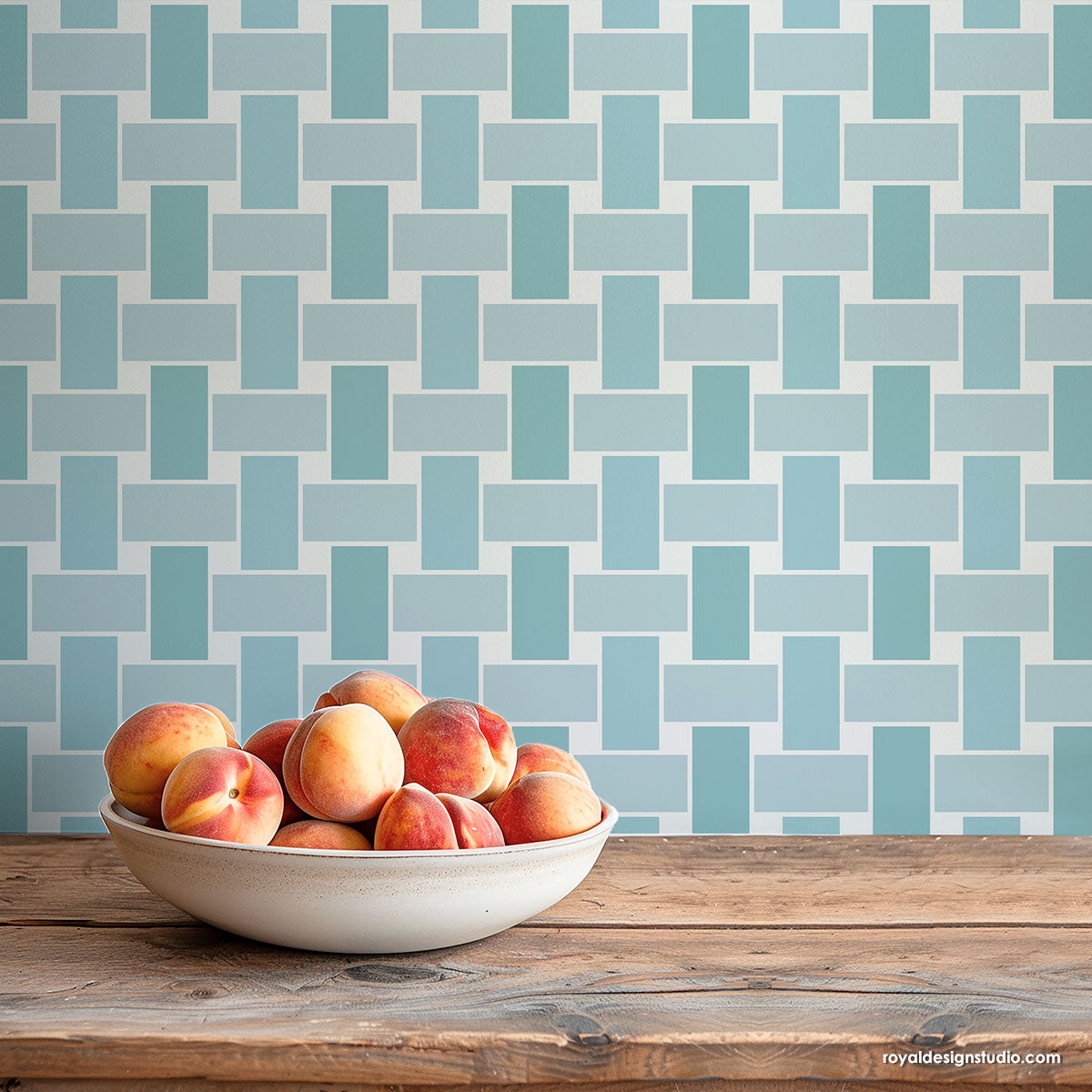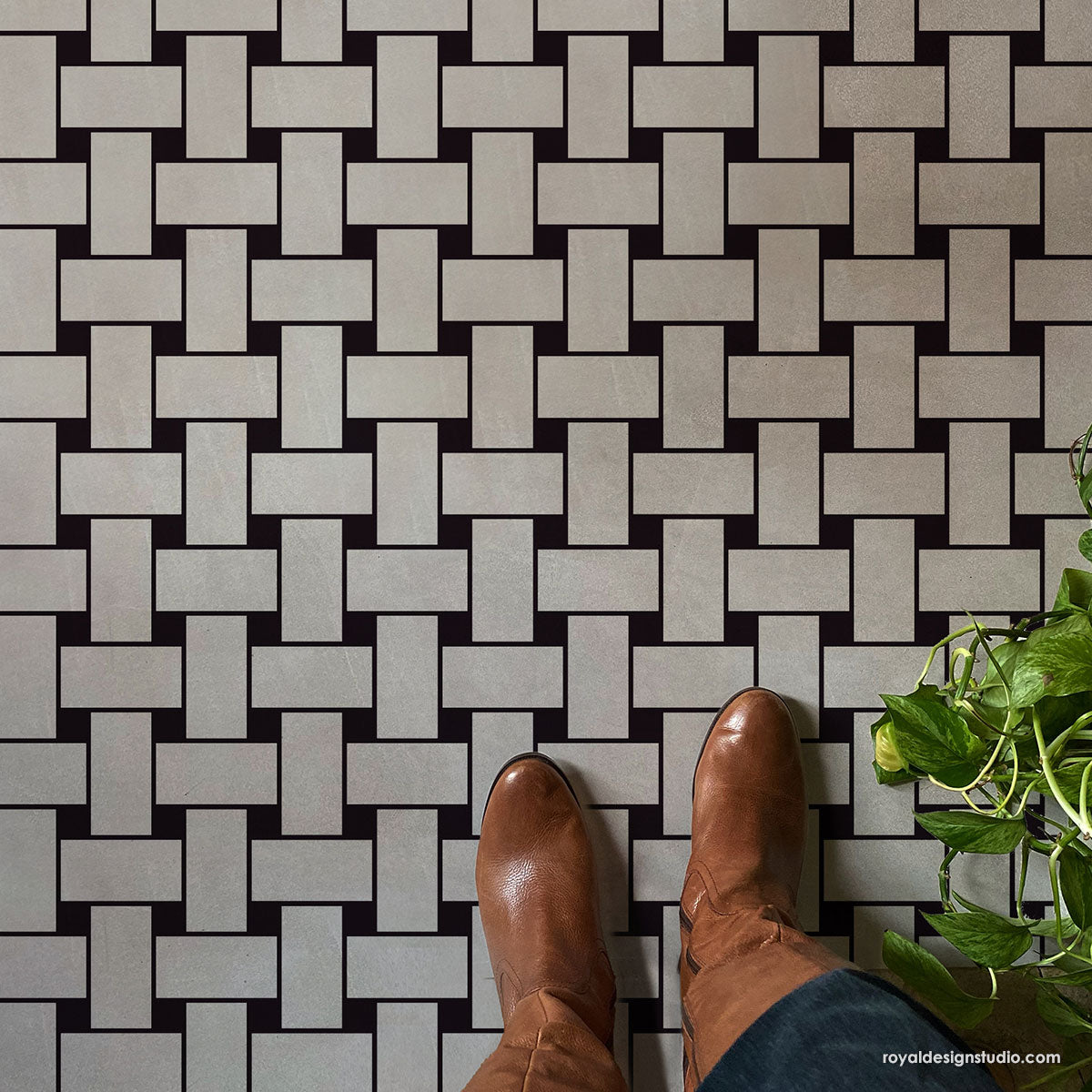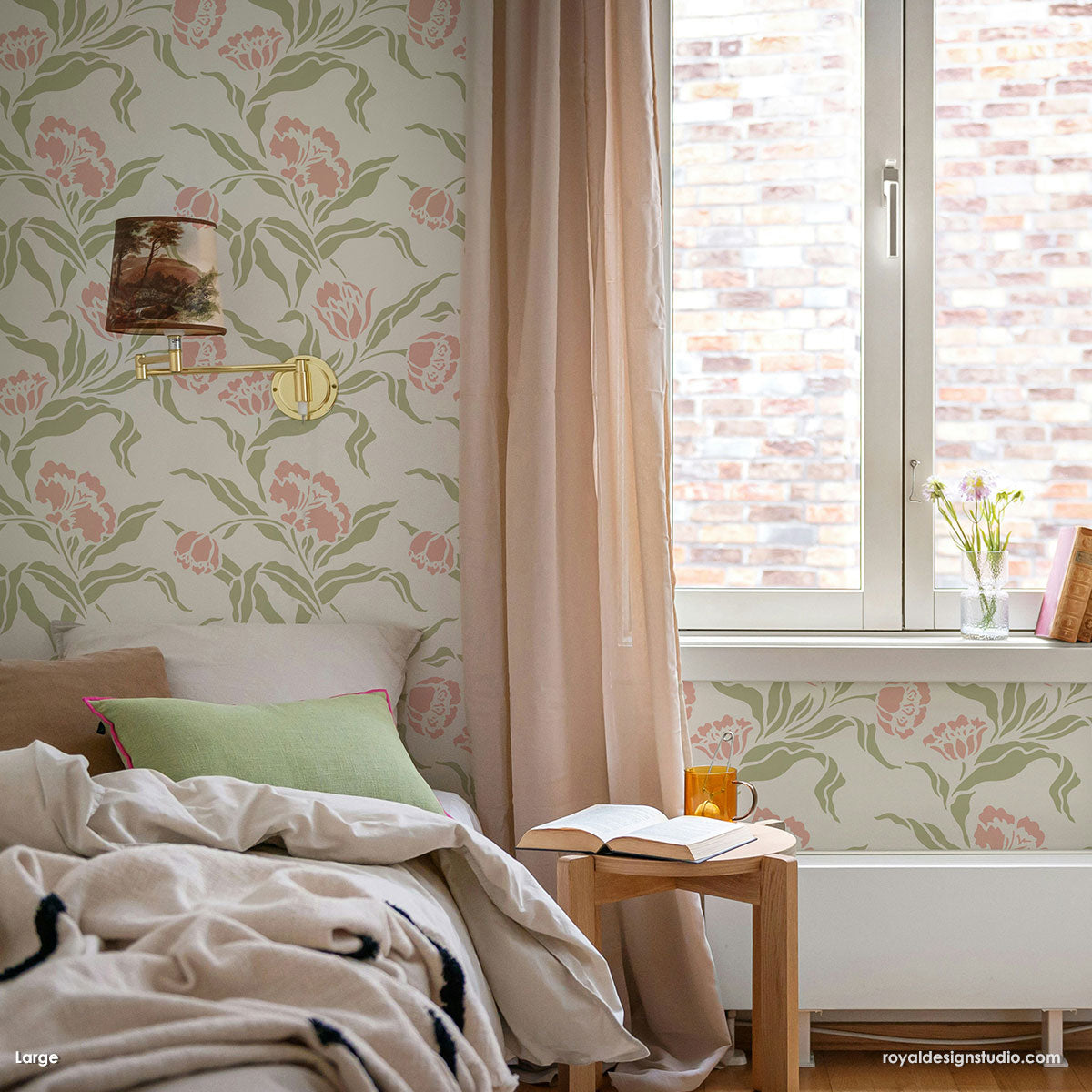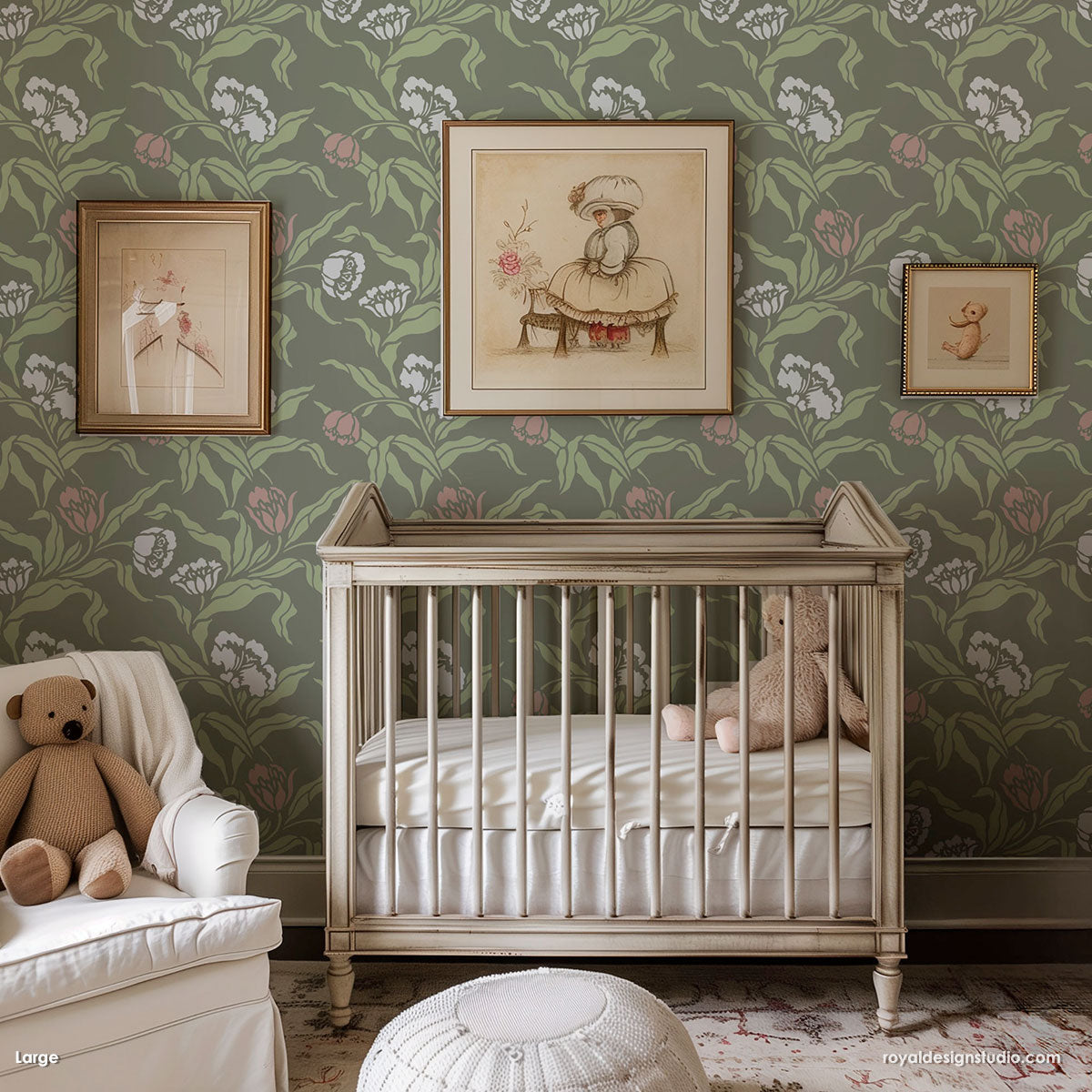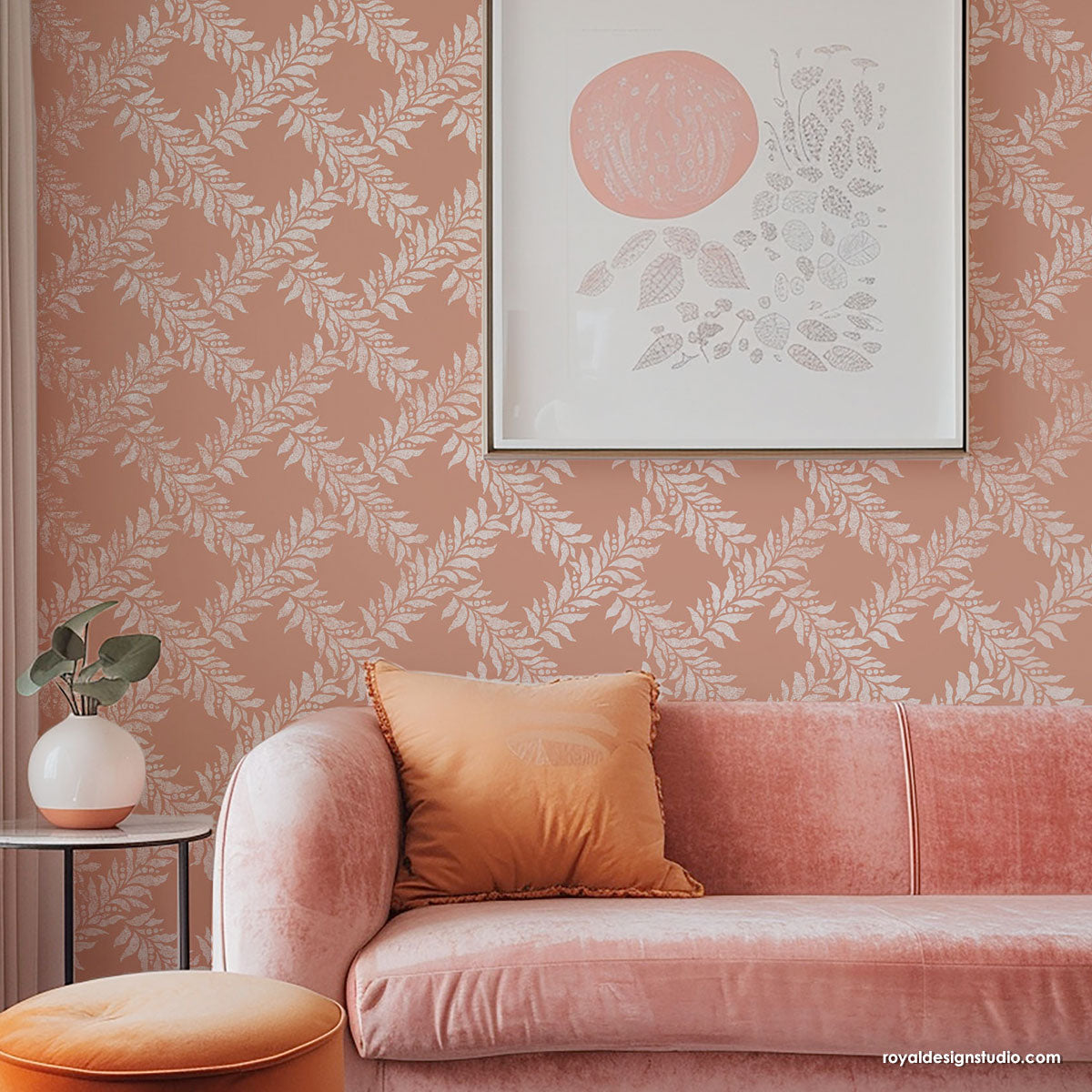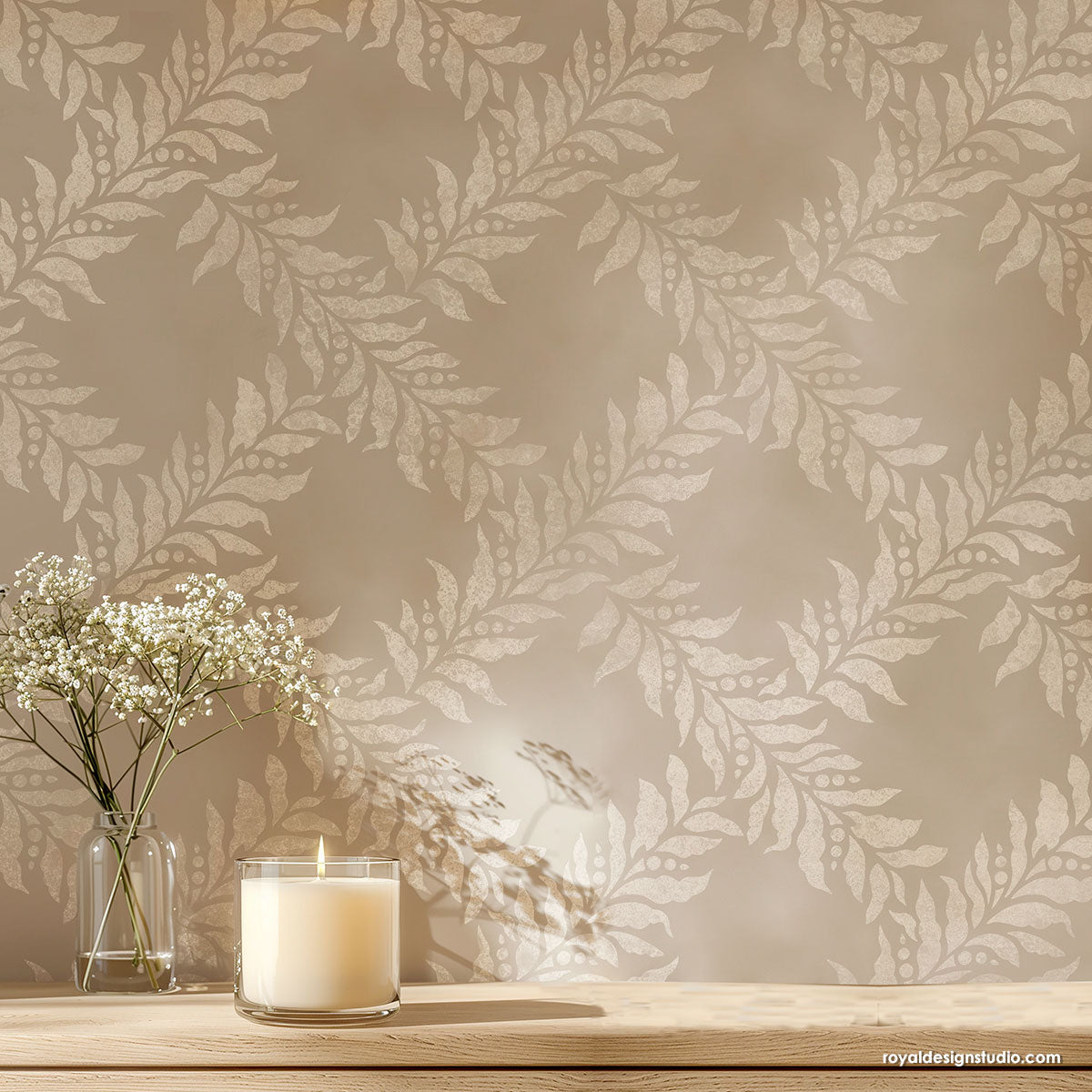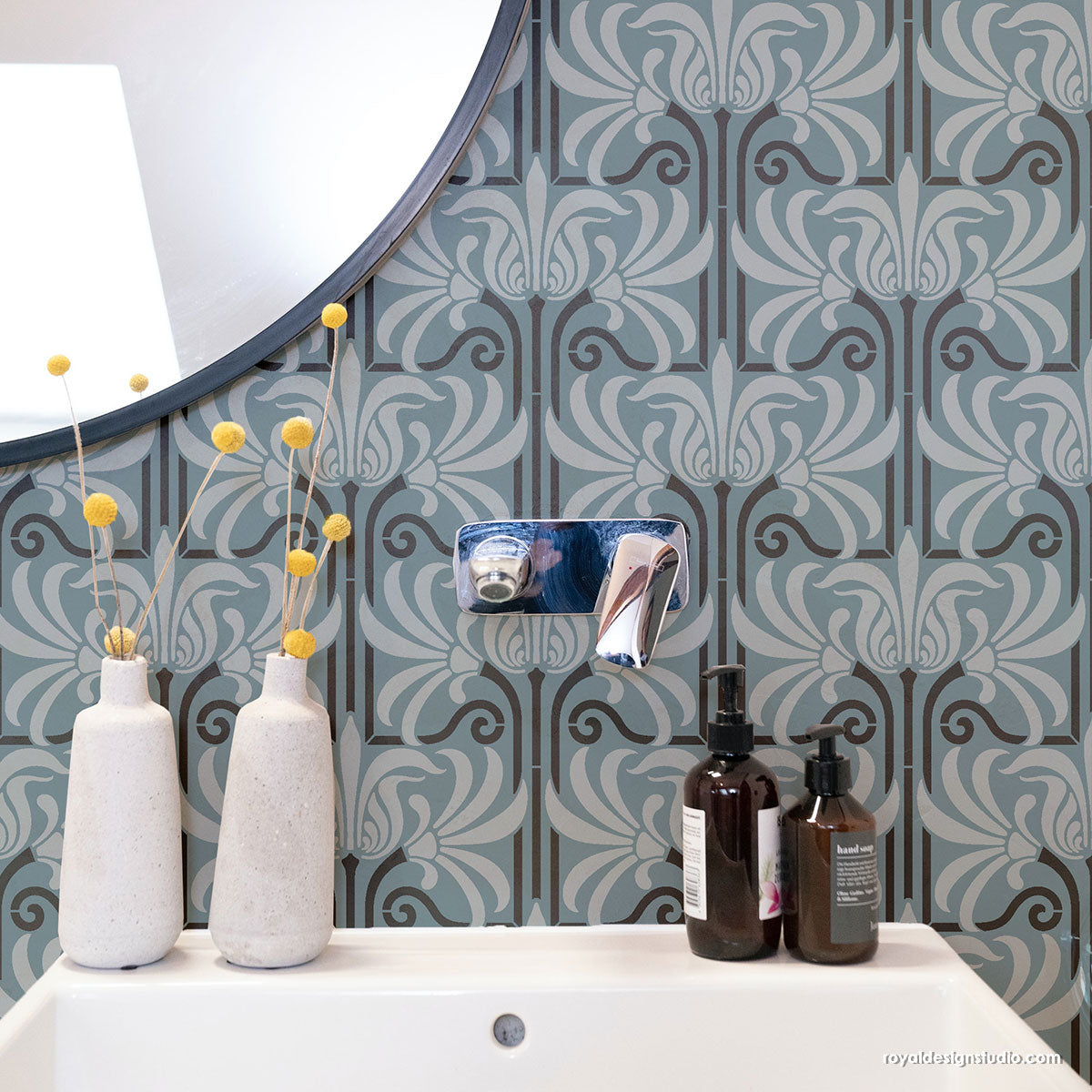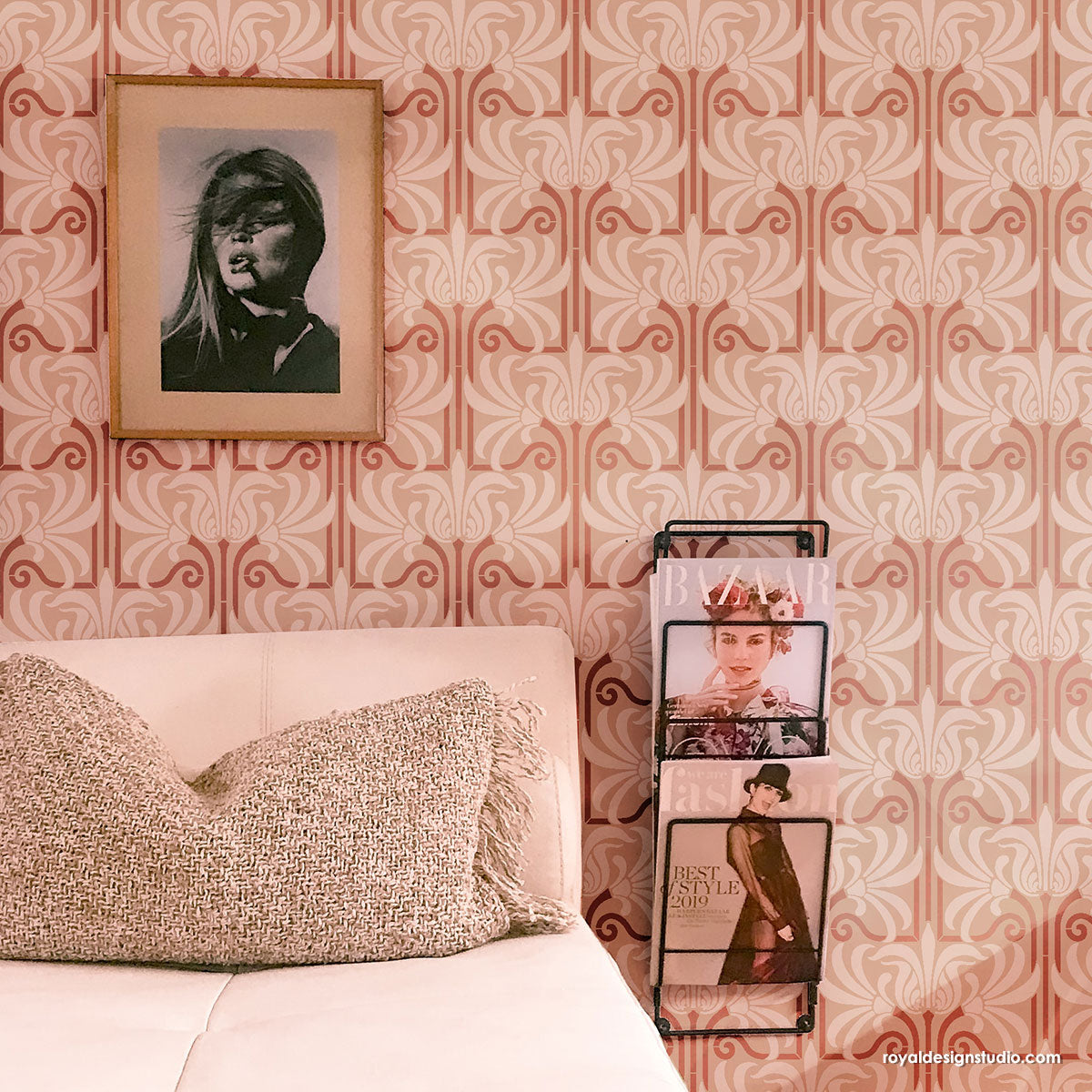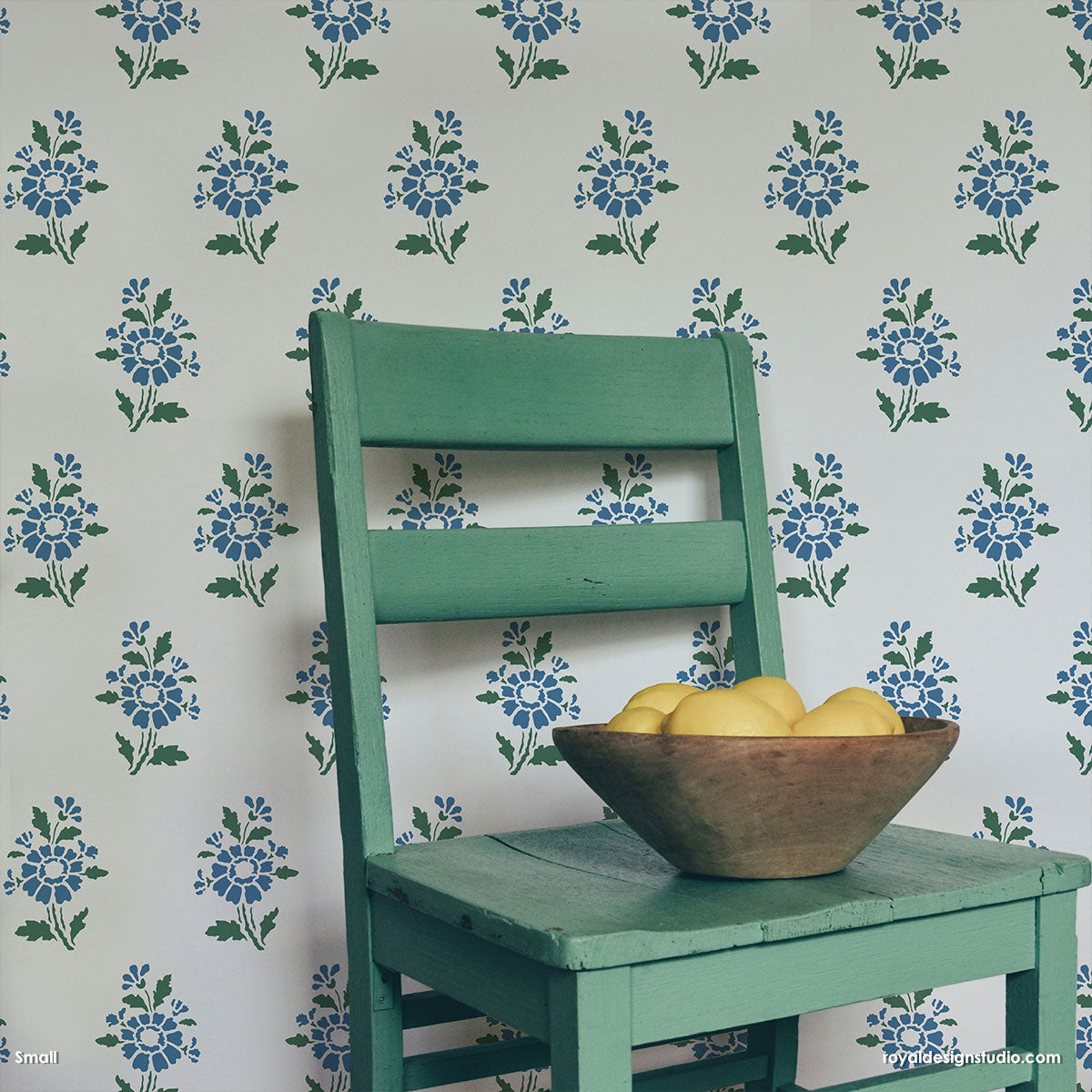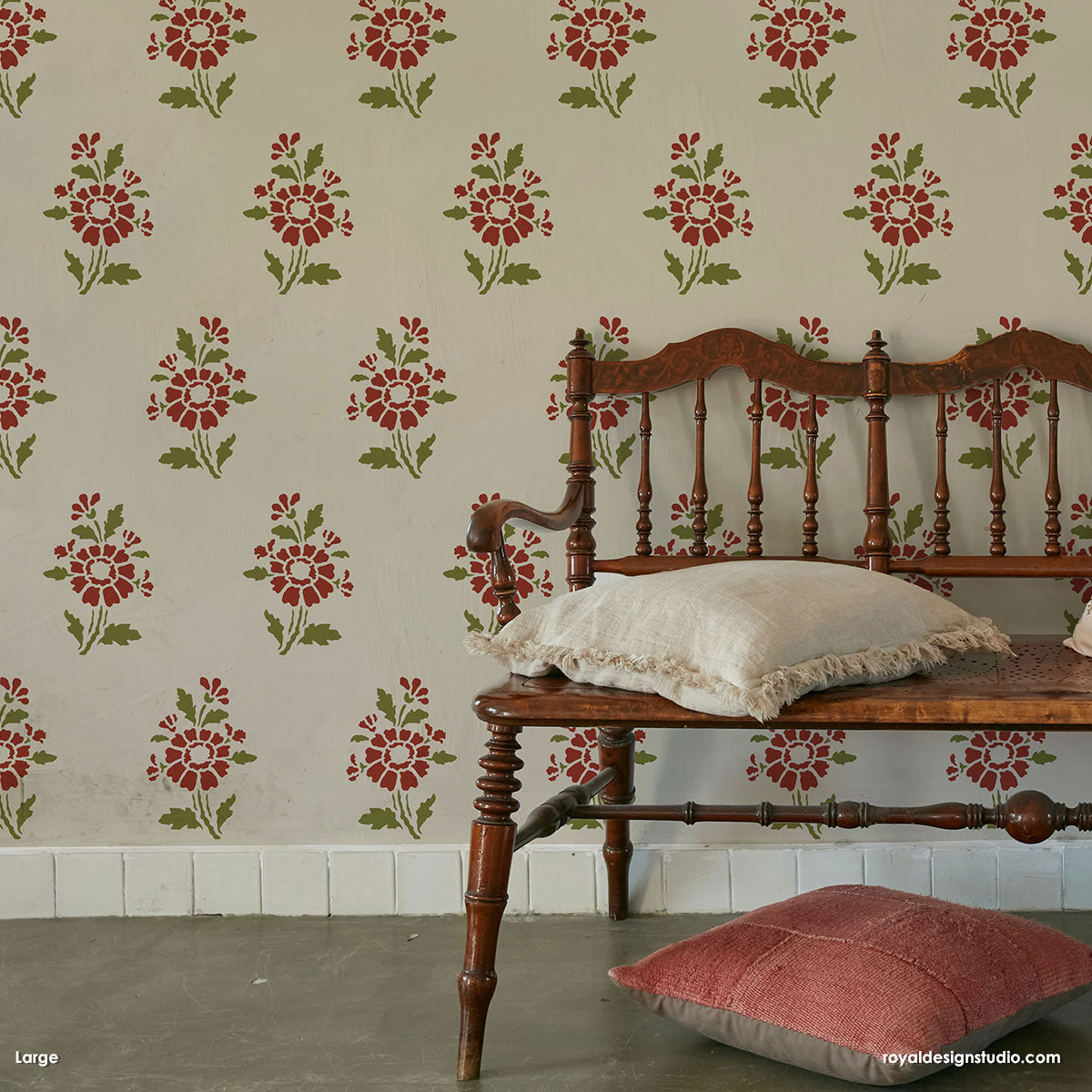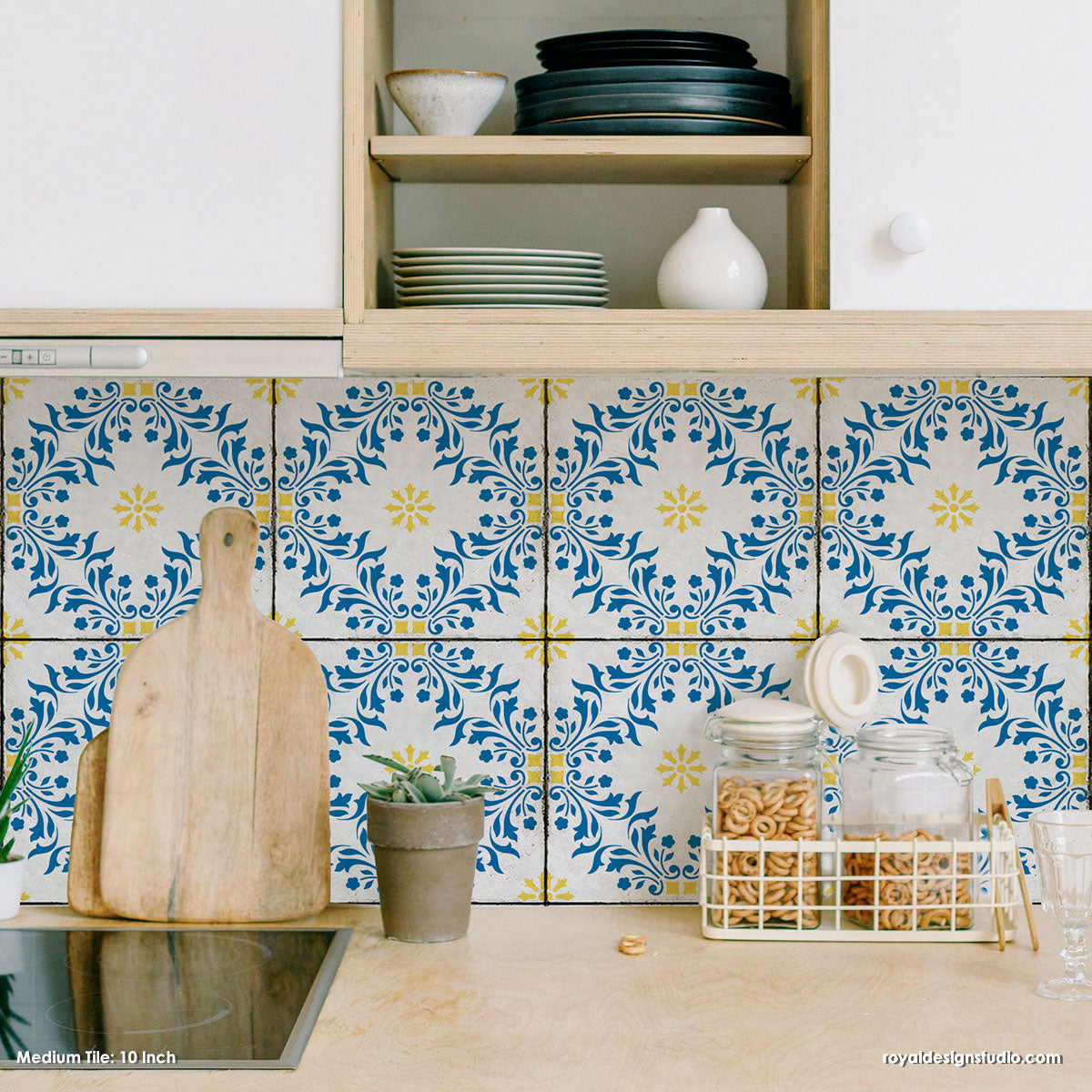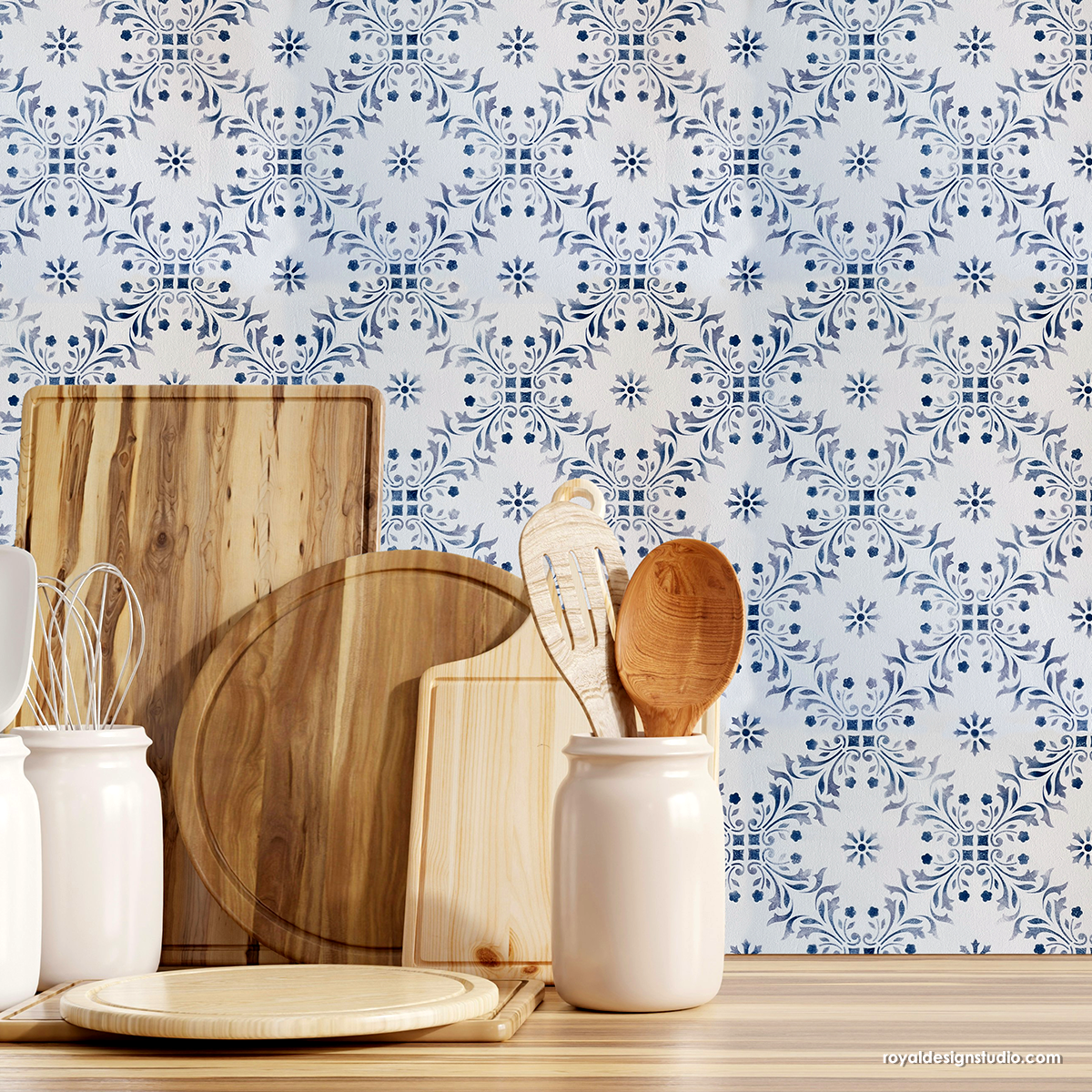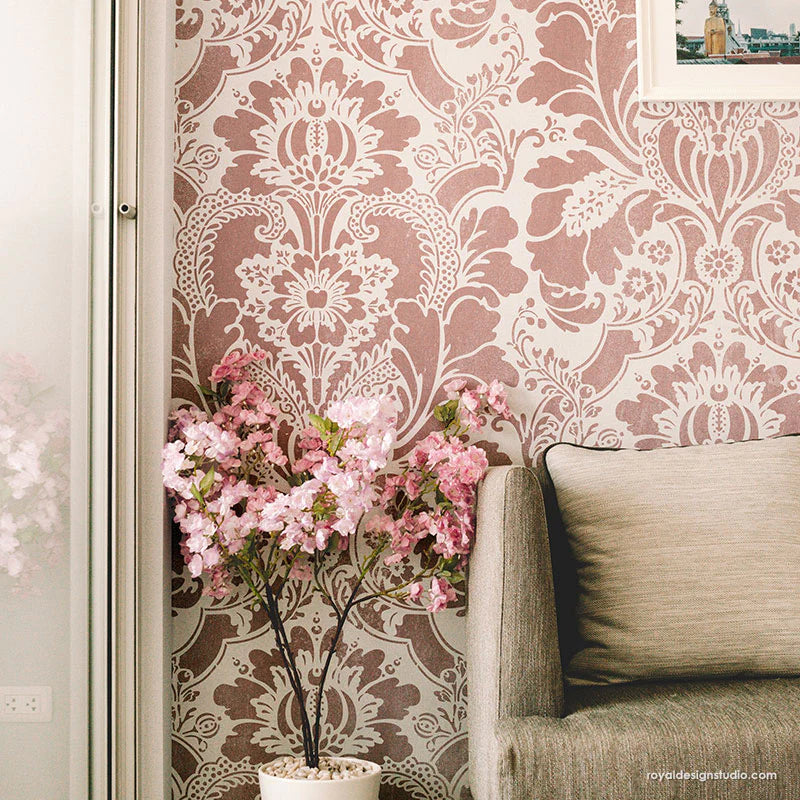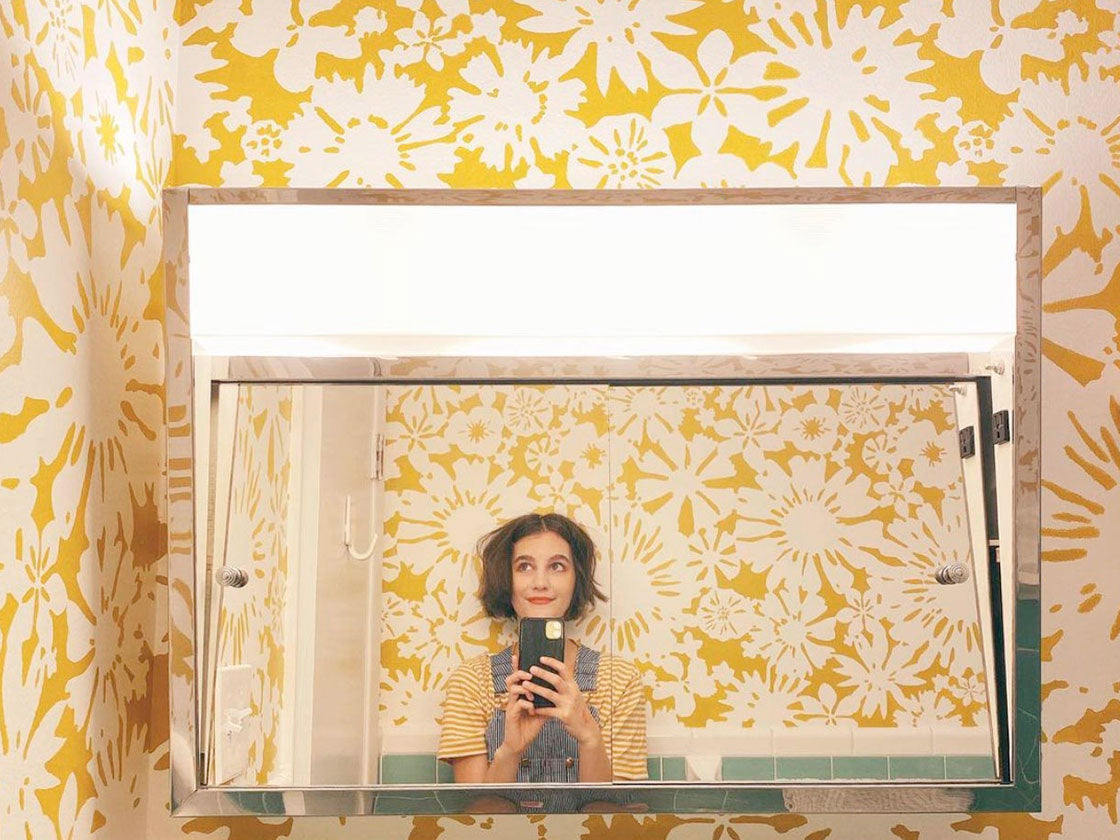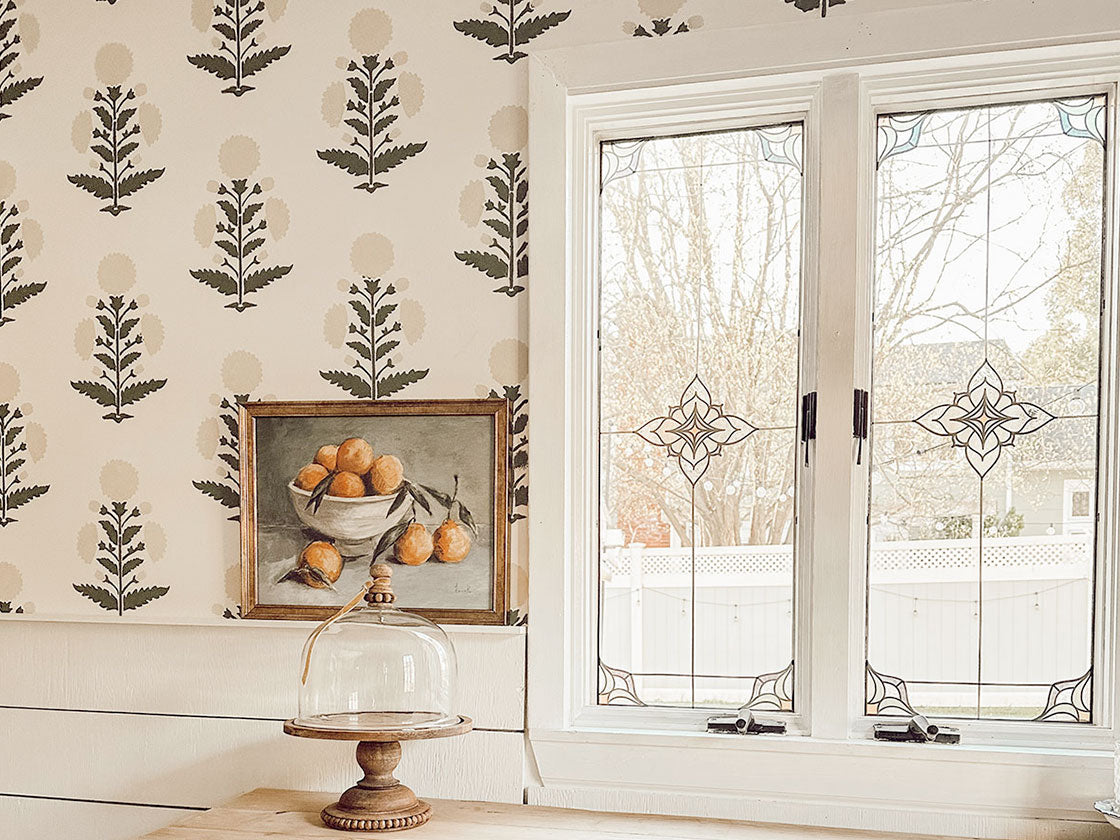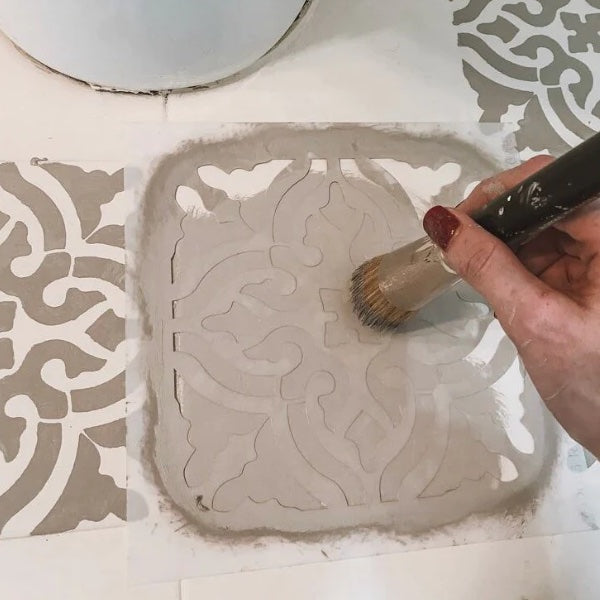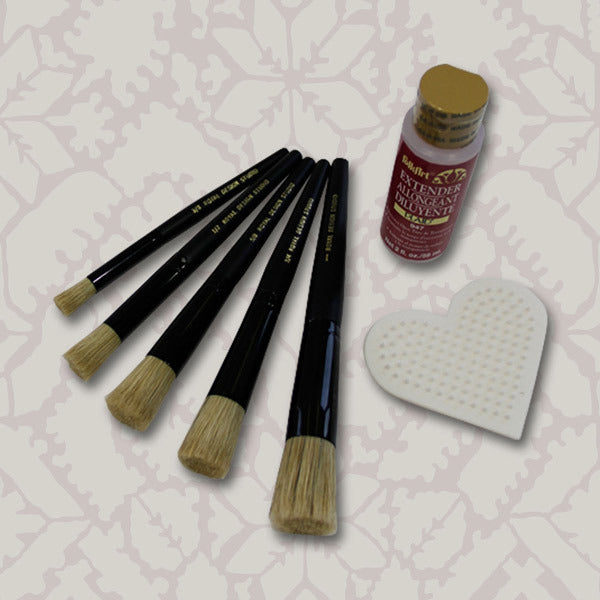Rugs have a profound impact in a home: they can tie a whole room together, serve as a designated play or reading area, introduce some color or texture to a dullish area or act a focal decor piece. Whatever the reason, everyone needs a good rug, but like most beautiful things in this world, buying them from stores can get pretty expensive. So instead of having to settle for a design that you’re not totally in love with, or having to spend way too much for the “perfect” design, do the (not so) unthinkable and make your own with stencils. Why buy when you can DIY? Roll up your sleeves and roll out your plain rug… Watch the video tutorial and read the instructions below to learn how to paint a DIY rug with Moroccan Stencils and Annie Sloan Chalk Paint®…
Supplies:
- Rabat Allover Moroccan Stencil and Tray Border Moroccan Stencil
- Graphite Chalk Paint® by Annie Sloan
- 2” Royal Stencil Brush
- Tightly woven 40” x 60” area rug
- Painter’s tape, paper towels, measuring tape
Step 1: We are going to stencil on a 40” x 60” area rug made from cotton, but you can use any natural woven rug material like jute, sisal, or seagrass. Find the center of your floor rug using measuring tape so that your repeat pattern will be symmetrical at opposite edges. Place and secure the Moroccan stencil pattern in the center of the rug using painter’s tape.
Step 2: Load a 2” stencil brush with Chalk Paint® and offload it really well onto paper towels before stenciling.
Step 3: Stencil the design using a firm, hard pressure and a circular motion with the brush, so that the paint is pushed into the fibers of the rug.
Pro tip: Use painter’s tape to mask off parts of elements on the stencil to create a straight edge for a border around the rug. Or, you can use painter’s tape directly on the rug to mask off a border the whole way around.
Step 4: After stenciling the first repeat, remove and reposition the stencil using the built-in registration marks.
Step 5: Repeat Steps 2 through 4 until the entire rug is stenciled. Remember to remove and reposition the painter’s tape to mask off the areas you don’t want to stencil and leave as a border. To finish off this design at the opposite side, flip the stencil around and place it directly over the previously stenciled areas to complete the pattern. Stencil the remaining elements of the stencil pattern.
Step 6: (Optional) Now it’s time to stencil the border of your rug! Adding a border with a second stencil is a great idea, especially when the first stencil doesn’t evenly fill the entire area rug. Align the edge of the border stencil with the edge of the already stenciled area. Secure with painter’s tape and mask off the extra elements that don’t fit onto the area rug.
Step 7: Stencil the border design with hard pressure and a circular motion. Remember to offload the excess paint off your brush!
Step 8: Remove and reposition the stencil using the built-in registration marks and continue to stencil each side of the DIY rug until you have completed the border.
Now, you’re ready to roll out the stenciled carpet and enjoy!
Looking for more Stencil Techniques using fabric stencils like this? Check out these other stencil ideas and tutorials:


![[VIDEO Tutorial] Roll It Out! How to Paint Fabric to Create a Custom DIY Area Rug with Moroccan Floor Stencils and Chalk Paint](http://cdn.shopify.com/s/files/1/0094/1122/files/moroccan-diy-rug-design-floor-stencils.-bookcoverjpg.jpg?v=1505430125)
![[VIDEO Tutorial] Roll It Out! How to Paint Fabric to Create a Custom DIY Area Rug with Moroccan Floor Stencils and Chalk Paint](http://cdn.shopify.com/s/files/1/0094/1122/files/masking_painters_tape.JPG?v=1505407113)
![[VIDEO Tutorial] Roll It Out! How to Paint Fabric to Create a Custom DIY Area Rug with Moroccan Floor Stencils and Chalk Paint](http://cdn.shopify.com/s/files/1/0094/1122/files/how_to_stencil_rug_fabric.JPG?v=1505407183)
![[VIDEO Tutorial] Roll It Out! How to Paint Fabric to Create a Custom DIY Area Rug with Moroccan Floor Stencils and Chalk Paint](http://cdn.shopify.com/s/files/1/0094/1122/files/painting_diy_rug_stencils_project.JPG?v=1505407216)
![[VIDEO Tutorial] Roll It Out! How to Paint Fabric to Create a Custom DIY Area Rug with Moroccan Floor Stencils and Chalk Paint](http://cdn.shopify.com/s/files/1/0094/1122/files/how_to_chalk_paint_fabric_rug_stencils.JPG?v=1505407095)
![[VIDEO Tutorial] Roll It Out! How to Paint Fabric to Create a Custom DIY Area Rug with Moroccan Floor Stencils and Chalk Paint](http://cdn.shopify.com/s/files/1/0094/1122/files/border_stencils_diy_area_rug.JPG?v=1505406994)
![[VIDEO Tutorial] Roll It Out! How to Paint Fabric to Create a Custom DIY Area Rug with Moroccan Floor Stencils and Chalk Paint](http://cdn.shopify.com/s/files/1/0094/1122/files/black_white_rug_project_diy_painting_fabric_stencils.JPG?v=1505410716)
![[VIDEO Tutorial] Roll It Out! How to Paint Fabric to Create a Custom DIY Area Rug with Moroccan Floor Stencils and Chalk Paint](http://cdn.shopify.com/s/files/1/0094/1122/files/moroccan_diy_rug_design_floor_stencils.jpg?v=1505410733)
